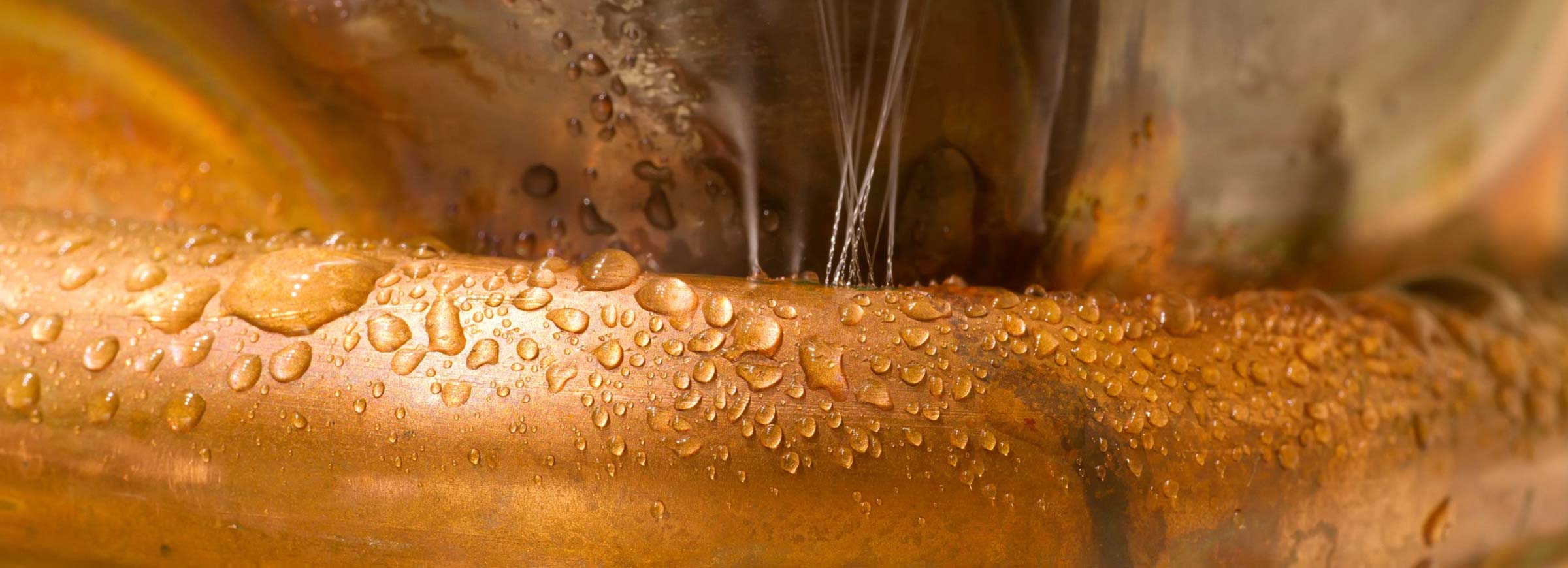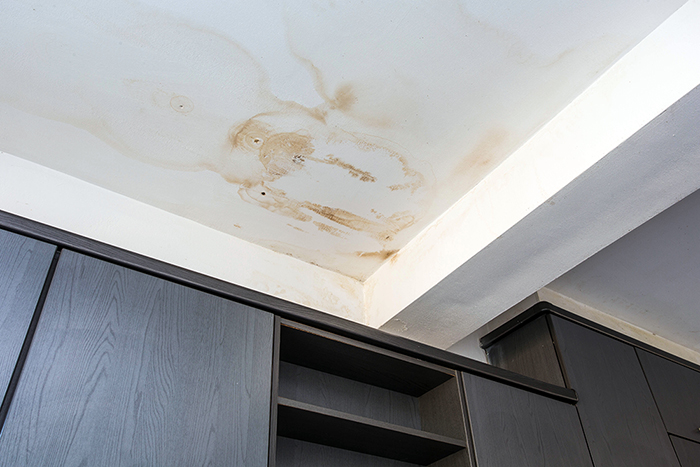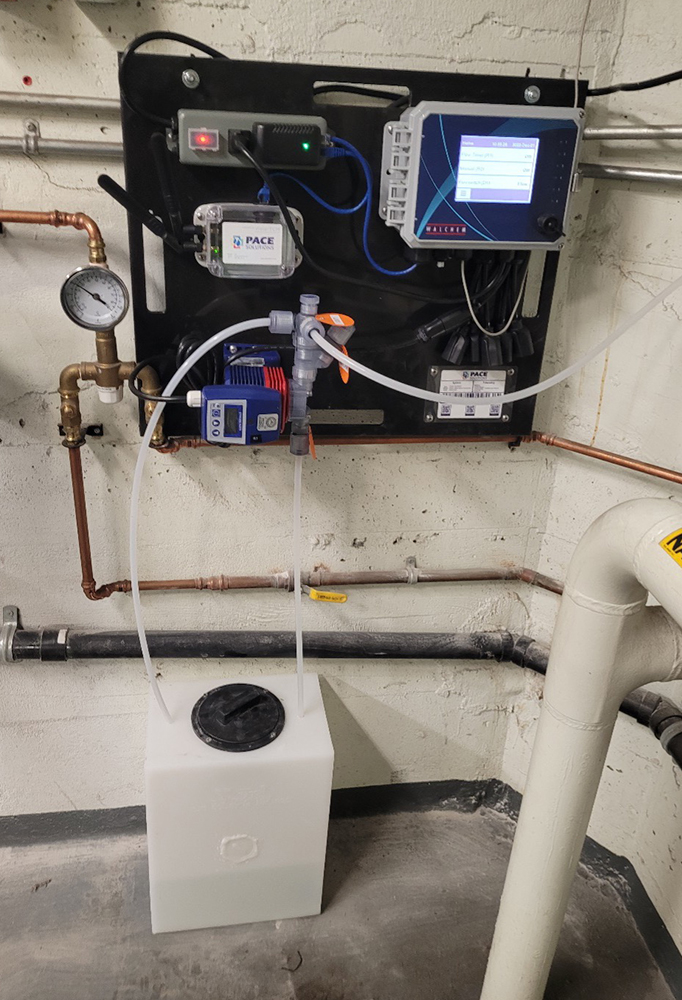Preventing Pinhole Leaks in Commercial and Residential Buildings

Once a multi-unit residential or commercial building reaches ten years old, you may notice the occasional pinhole leak in the copper pipes of your domestic or drinking water lines. It starts with a single watermark showing up in the ceiling drywall caused by a pin-sized leak from a water line. For a few hundred dollars, the leak and drywall damage is repaired. Over the next few years, the frequency of these leaks increase until they are happening on a monthly or even weekly basis.
Unfortunately, it only gets worse from there.
What causes pinhole leaks?
Pinhole leaks are most commonly caused by the corrosive nature of the water flowing through the copper water lines. Oxygen in the water supply reacts with the copper pipes to form copper oxide, then combines with carbon dioxide to form copper carbonate, which gives it a greenish patina colour. This process strips out copper from the inside of the pipe until the pipe wall is so thin that a hole occurs.
Replacing small sections of pipe where pinholes have occurred will provide a temporary fix, but the corrosion process will not stop. The pinhole frequency will increase until the building is faced with the costly expense of re-piping the entire system. Re-piping a multi-unit residential building can cost more than a million dollars and cause a major disruption to the occupants of the building.

How to prevent pinhole leaks
The best way to prevent pinhole leaks is to introduce a sacrificial additive that sequesters the oxygen and lays down a mono-molecular film inside the pipe work. This prevents the oxygen from scavenging copper and other alloys from the domestic water system, thus minimizing the corrosion process.
Parafos is an additive designed to minimize pinhole leaks caused by corrosion and prevent mineral scale buildup in hard water applications. It works by injecting 4 to 6 parts per million of the additive into the building water to sequester oxygen, preventing it from corroding the pipework as it passes through.
Is Parafos safe?
Parafos is National Safety Foundation (NSF) and Canada Food Inspection Agency (CFIA) approved safe for human consumption and is safe for the environment. It is odourless, colourless, tasteless and makes no change to the quality of the building’s drinking water.

How can I tell if I need to treat my system?
Identifying the problem early is the best way to extend the life of domestic water systems. While pinhole leaks and green staining around faucets are signs of copper corrosion, the best way to confirm the cause is to measure the copper levels in the building’s water.

Test the amount of copper and other alloys in a sample of the city water supply as it enters the building and compare it to water samples from the hot and cold water lines as it exits a faucet on the opposite side of the building.
Any increase in copper found in the exit sample, compared to the entry sample, will be an indicator of the rate of corrosion. In the above example, the building pipes are losing approximately 0.401 milligrams of copper for every litre that passes through the building. The building consumes 16790 m2 of water each year, which means the pipes are losing approximately 6.7 kilograms of copper each year.
Contact Pace Solutions to find out more about domestic water testing and Parafos treatment.




